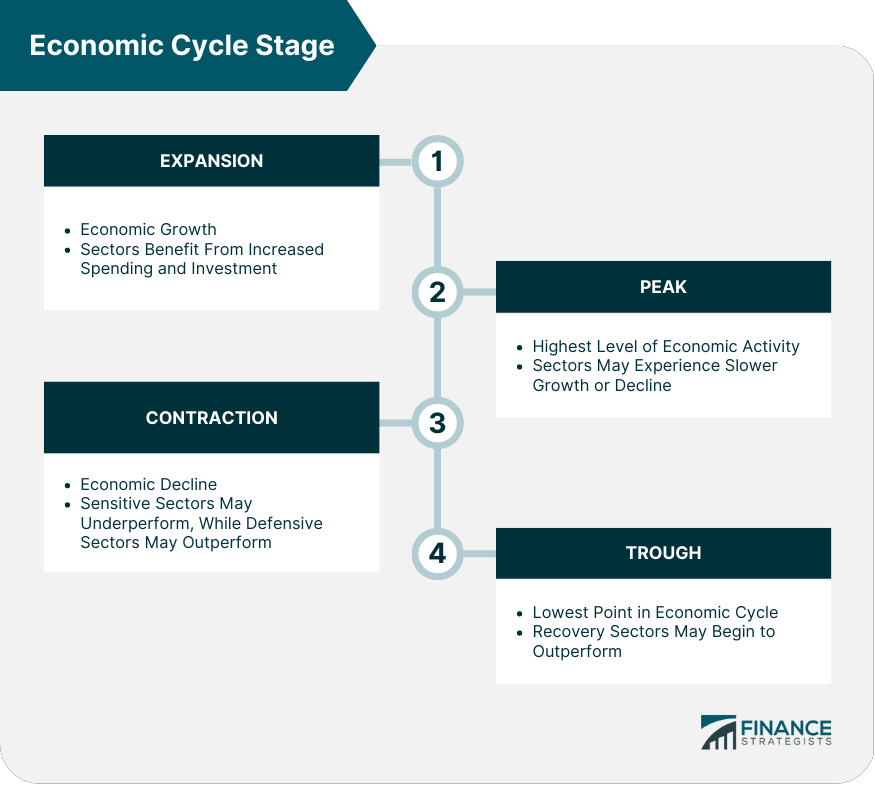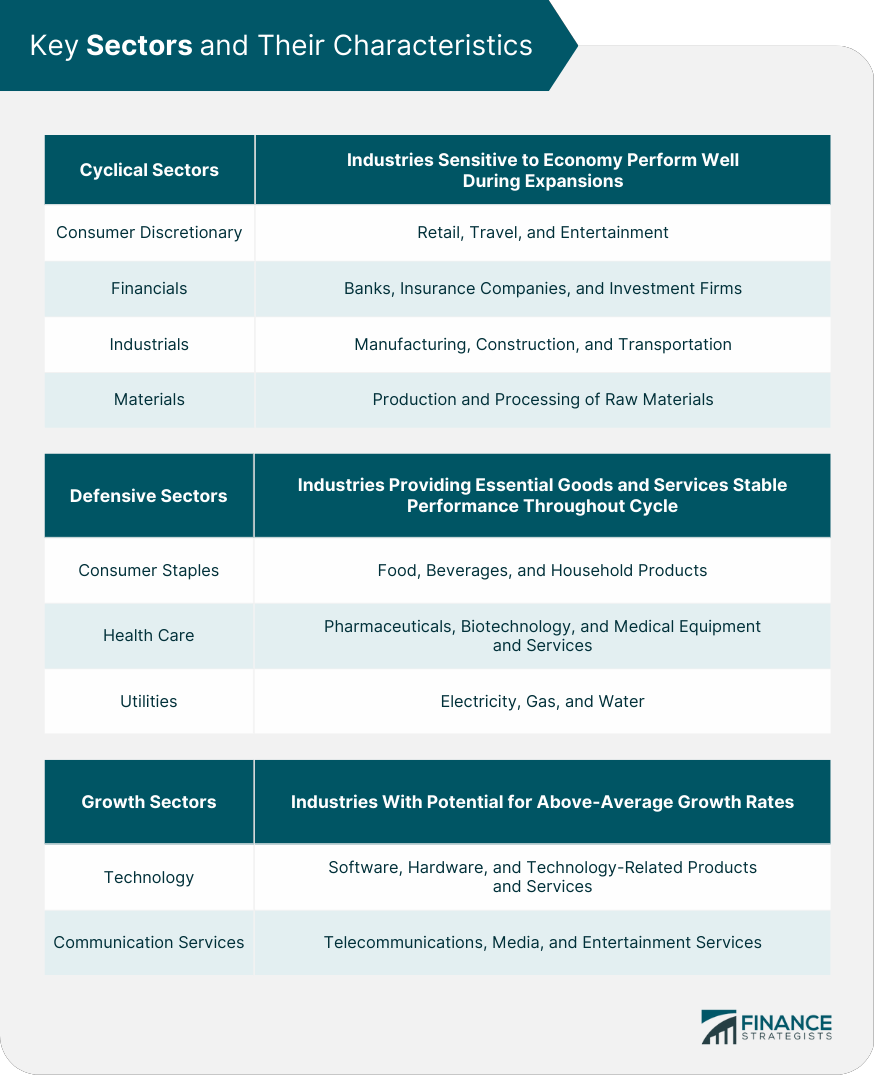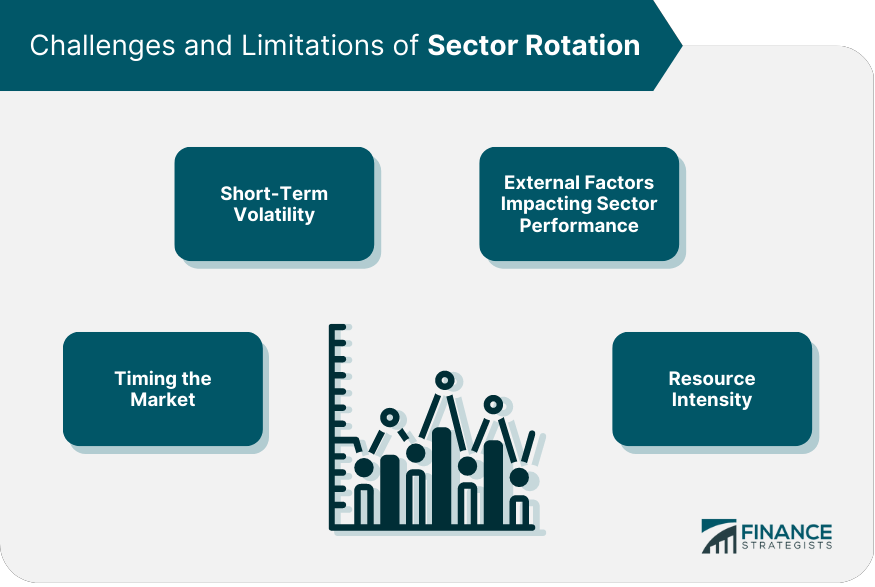Sector rotation is an investment strategy that involves reallocating assets among various sectors of the economy to capitalize on the performance of different industries during different phases of the economic cycle. This approach aims to take advantage of the cyclical nature of market performance by identifying and investing in sectors that are expected to outperform during specific periods. Sector rotation is a valuable tool in portfolio management, as it can help investors enhance returns, manage risk, and achieve a more diversified investment portfolio. By adjusting sector allocations in response to changing market conditions, investors can potentially optimize their portfolios and achieve better long-term results. The fundamental principle of sector rotation is to identify sectors that are expected to perform well during specific stages of the economic cycle and increase exposure to those sectors while reducing exposure to underperforming sectors. This strategy requires understanding the economic cycle, sector performance, and market trends to make informed investment decisions. Economic cycles typically have four stages: expansion, peak, contraction, and trough. These stages represent periods of economic growth, maximum economic activity, economic decline, and the lowest level of economic activity, respectively. During the expansion phase, economic activity increases, and sectors that benefit from increased consumer spending and business investment tends to outperform. The peak phase represents the highest level of economic activity, and sectors that have benefited from the expansion phase may start to experience slower growth or decline. In the contraction phase, economic activity declines, and sectors that are sensitive to economic slowdowns may underperform, while defensive sectors may outperform. The trough phase marks the lowest point in the economic cycle, and sectors that are poised to benefit from the early stages of economic recovery may begin to outperform. Different sectors of the economy perform differently during various stages of the economic cycle. Understanding sector performance during economic cycles can help investors identify potential opportunities and make informed sector allocation decisions. By monitoring economic indicators, market trends, and sector performance, investors can identify sectors that are likely to outperform during specific stages of the economic cycle. This can help them make strategic allocation decisions and potentially enhance portfolio returns. Cyclical sectors are industries that are sensitive to changes in the overall economy and tend to perform well during periods of economic expansion but may underperform during contractions. The consumer discretionary sector includes businesses that provide non-essential goods and services, such as retail, travel, and entertainment. This sector typically performs well during periods of economic growth when consumers have more disposable income. Financials include banks, insurance companies, and investment firms, which often benefit from rising interest rates and increased lending during economic expansions but may suffer during downturns. Industrials encompass companies involved in manufacturing, construction, and transportation, which often experience increased demand during periods of economic growth but may face challenges during contractions. The materials sector includes companies involved in the production and processing of raw materials, such as metals and chemicals. This sector is sensitive to economic conditions and tends to perform well during expansions but may struggle during downturns. Defensive sectors are industries that provide essential goods and services, and their performance tends to be more stable throughout the economic cycle. Consumer staples include companies that produce and sell essential goods, such as food, beverages, and household products. This sector tends to be less sensitive to economic fluctuations and may provide stability during market downturns. The healthcare sector includes companies involved in pharmaceuticals, biotechnology, and medical equipment and services. As demand for healthcare products and services tends to be relatively consistent, the sector can provide stability during economic downturns and outperform in certain stages of the economic cycle. Utilities encompass companies that provide essential services such as electricity, gas, and water. These companies typically have stable revenues and cash flows, making them less sensitive to economic fluctuations and providing a defensive element in a portfolio. Growth sectors are industries that have the potential for above-average growth rates compared to the overall market, often driven by technological innovation and advancements. The technology sector includes companies involved in software, hardware, and other technology-related products and services. This sector tends to experience rapid growth and innovation, offering the potential for strong returns but also carrying higher risk. Communication services include companies that provide telecommunications, media, and entertainment services. This sector can offer growth opportunities as new technologies and platforms continue to transform the way people communicate and consume content. The top-down approach to sector rotation involves analyzing macroeconomic factors, such as economic growth, inflation, and interest rates, to identify sectors that are likely to perform well in the current economic environment. This approach allows investors to make strategic asset allocation decisions based on broader economic trends. The bottom-up approach to sector rotation focuses on analyzing individual companies within sectors to identify specific investment opportunities. This approach involves conducting fundamental analysis of companies to assess their growth prospects, competitive position, and valuation relative to other companies in the sector. Active sector rotation involves actively managing a portfolio by adjusting sector allocations based on market trends and economic conditions. Passive sector rotation, on the other hand, relies on index-based investment products, such as sector-specific exchange-traded funds (ETFs), to achieve a desired sector exposure while minimizing active management efforts. Sector rotation can contribute to portfolio diversification and risk management by adjusting exposures to different sectors as market conditions change. By maintaining a diversified portfolio and periodically rebalancing sector allocations, investors can potentially reduce portfolio risk and enhance returns. One of the primary challenges of sector rotation is the difficulty of accurate timing market shifts and economic cycles. Mistiming sector rotations can lead to underperformance and increased portfolio risk. Sector rotation can result in increased short-term volatility as investors adjust their portfolios in response to changing market conditions. This can make sector rotation strategies less suitable for risk-averse investors or those with a short investment horizon. External factors, such as geopolitical events and regulatory changes, can impact sector performance and create challenges for sector rotation strategies. These factors can be difficult to predict and may lead to unexpected shifts in sector performance. Implementing a successful sector rotation strategy can be resource-intensive, requiring ongoing research, analysis, and portfolio adjustments. This can make sector rotation less accessible for individual investors who lack the time or resources to actively manage their portfolios. Modern Portfolio Theory emphasizes the importance of portfolio diversification and risk management in achieving optimal investment outcomes. Sector rotation can be used as a tactical asset allocation strategy to help investors move their portfolios closer to the efficient frontier, where expected returns are maximized for a given level of risk. Sector rotation can be viewed as a form of tactical asset allocation. It allows investors to adjust their portfolio exposures to different sectors based on changing market conditions and economic cycles. By rotating between sectors, investors can potentially capture higher returns during periods of economic growth while reducing exposure to sectors that may underperform during economic downturns. While sector rotation can help investors take advantage of changing market conditions, balancing this strategy with diversification is essential. Maintaining exposure to various sectors can help investors manage risk and achieve more consistent returns, even if some sector bets do not perform as expected. Sector rotation is an important strategy for investors seeking to enhance portfolio performance and manage risk. By understanding the relationship between economic cycles and sector performance, investors can make informed decisions about allocating assets and capitalizing on sector-specific opportunities. Successful sector rotation requires investors to adapt to changing market conditions and economic cycles. This involves monitoring economic indicators, market trends, and sector performance to make strategic allocation decisions and optimize portfolio returns. Investors can benefit from developing a disciplined and systematic approach to sector rotation, which includes regularly reviewing and adjusting sector allocations based on changing market conditions. This approach can help minimize the impact of market timing errors and ensure that sector rotation strategies remain aligned with overall investment goals. For investors seeking assistance with sector rotation strategies, consulting with wealth management professionals may be beneficial. What Is Sector Rotation?
Economic Cycles and Sector Performance
Stages of Economic Cycles
Expansion
Peak
Contraction
Trough

Sector Performance During Economic Cycles
Identifying Sector Opportunities
Key Sectors and Their Characteristics
Cyclical Sectors
Consumer Discretionary
Financials
Industrials
Materials
Defensive Sectors
Consumer Staples
Health Care
Utilities
Growth Sectors
Technology
Communication Services

Implementing Sector Rotation Strategies
Top-Down Approach
Bottom-Up Approach
Active vs Passive Sector Rotation
Portfolio Diversification and Risk Management
Challenges and Limitations of Sector Rotation

Timing the Market
Short-Term Volatility
External Factors Impacting Sector Performance
Resource Intensity
Sector Rotation in the Context of Modern Portfolio Theory
Efficient Frontier and Portfolio Optimization
Sector Rotation as a Tactical Asset Allocation Strategy
Balancing Sector Rotation with Diversification
Final Thoughts
Sector Rotation FAQs
Sector rotation is an investment strategy that involves reallocating assets among various sectors of the economy to capitalize on the performance of different industries during different phases of the economic cycle.
Economic cycles typically have four stages: expansion, peak, contraction, and trough. These stages represent periods of economic growth, maximum economic activity, economic decline, and the lowest level of economic activity, respectively.
Investors can implement sector rotation strategies through a top-down approach, which involves analyzing macroeconomic factors, or a bottom-up approach, which focuses on analyzing individual companies within sectors to identify specific investment opportunities.
Sector rotation can help investors enhance returns, manage risk, and achieve a more diversified investment portfolio. By adjusting sector allocations in response to changing market conditions, investors can potentially optimize their portfolios and achieve better long-term results.
The challenges of sector rotation include the difficulty of accurate timing market shifts and economic cycles, increased short-term volatility, external factors impacting sector performance, and resource intensity. Balancing sector rotation with diversification is essential to manage risk and achieve consistent returns.
True Tamplin is a published author, public speaker, CEO of UpDigital, and founder of Finance Strategists.
True is a Certified Educator in Personal Finance (CEPF®), author of The Handy Financial Ratios Guide, a member of the Society for Advancing Business Editing and Writing, contributes to his financial education site, Finance Strategists, and has spoken to various financial communities such as the CFA Institute, as well as university students like his Alma mater, Biola University, where he received a bachelor of science in business and data analytics.
To learn more about True, visit his personal website or view his author profiles on Amazon, Nasdaq and Forbes.











